Major Histocompatibility Class II Pathway Is Not Required for the Development of Nonalcoholic Fatty Liver Disease in Mice
- PMID: 23710178
- PMCID: PMC3655579
- DOI: 10.1155/2013/972962
Major Histocompatibility Class II Pathway Is Not Required for the Development of Nonalcoholic Fatty Liver Disease in Mice
Abstract
Single-nucleotide polymorphisms within major histocompatibility class II (MHC II) genes have been associated with an increased risk of drug-induced liver injury. However, it has never been addressed whether the MHC II pathway plays an important role in the development of nonalcoholic fatty liver disease, the most common form of liver disease. We used a mouse model that has a complete knockdown of genes in the MHC II pathway (MHCII(Δ/Δ)). Firstly we studied the effect of high-fat diet-induced hepatic inflammation in these mice. Secondly we studied the development of carbon-tetra-chloride- (CCl4-) induced hepatic cirrhosis. After the high-fat diet, both groups developed obesity and hepatic steatosis with a similar degree of hepatic inflammation, suggesting no impact of the knockdown of MHC II on high-fat diet-induced inflammation in mice. In the second study, we confirmed that the CCl4 injection significantly upregulated the MHC II genes in wild-type mice. The CCl4 treatment significantly induced genes related to the fibrosis formation in wild-type mice, whereas this was lower in MHCII(Δ/Δ) mice. The liver histology, however, showed no detectable difference between groups, suggesting that the MHC II pathway is not required for the development of hepatic fibrosis induced by CCl4.
Figures



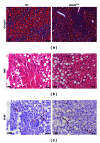
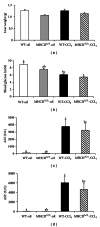

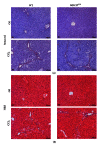
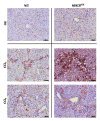
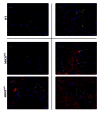
Similar articles
-
Combination of CCl4 with alcoholic and metabolic injuries mimics human liver fibrosis.Am J Physiol Gastrointest Liver Physiol. 2019 Aug 1;317(2):G182-G194. doi: 10.1152/ajpgi.00361.2018. Epub 2019 Jun 12. Am J Physiol Gastrointest Liver Physiol. 2019. PMID: 31188634
-
Overactivation of intestinal sterol response element-binding protein 2 promotes diet-induced nonalcoholic steatohepatitis.Am J Physiol Gastrointest Liver Physiol. 2017 Nov 1;313(5):G376-G385. doi: 10.1152/ajpgi.00174.2017. Epub 2017 Aug 3. Am J Physiol Gastrointest Liver Physiol. 2017. PMID: 28774869 Free PMC article.
-
TRIF Differentially Regulates Hepatic Steatosis and Inflammation/Fibrosis in Mice.Cell Mol Gastroenterol Hepatol. 2017 Jan 17;3(3):469-483. doi: 10.1016/j.jcmgh.2016.12.004. eCollection 2017 May. Cell Mol Gastroenterol Hepatol. 2017. PMID: 28462384 Free PMC article.
-
Galectin-3 and IL-33/ST2 axis roles and interplay in diet-induced steatohepatitis.World J Gastroenterol. 2016 Nov 28;22(44):9706-9717. doi: 10.3748/wjg.v22.i44.9706. World J Gastroenterol. 2016. PMID: 27956794 Free PMC article. Review.
-
Fructose as a key player in the development of fatty liver disease.World J Gastroenterol. 2013 Feb 28;19(8):1166-72. doi: 10.3748/wjg.v19.i8.1166. World J Gastroenterol. 2013. PMID: 23482247 Free PMC article. Review.
Cited by
-
The case for FAT10 as a novel target in fatty liver diseases.Front Pharmacol. 2022 Nov 1;13:972320. doi: 10.3389/fphar.2022.972320. eCollection 2022. Front Pharmacol. 2022. PMID: 36386217 Free PMC article. Review.
-
Animal Models Correlating Immune Cells for the Development of NAFLD/NASH.J Clin Exp Hepatol. 2015 Sep;5(3):239-45. doi: 10.1016/j.jceh.2015.06.004. Epub 2015 Jul 9. J Clin Exp Hepatol. 2015. PMID: 26628841 Free PMC article. Review.
References
-
- Mitchison NA. T-cell-B-cell cooperation. Nature Reviews Immunology. 2004;4:308–312. - PubMed
-
- Singer JB, Lewitzky S, Leroy E, et al. A genome-wide study identifies HLA alleles associated with lumiracoxib-related liver injury. Nature Genetics. 2010;42(8):711–714. - PubMed
-
- Laine L, White WB, Rostom A, Hochberg M. COX-2 selective inhibitors in the treatment of osteoarthritis. Seminars in Arthritis and Rheumatism. 2008;38(3):165–187. - PubMed
LinkOut - more resources
Full Text Sources
Other Literature Sources
Research Materials

